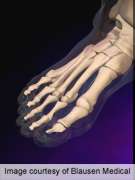Gout is the primary indication in about 0.2 percent of emergency department visits annually, according to a study published online Sept. 4 in Arthritis Care & Research.
(HealthDay)—Gout is the primary indication in about 0.2 percent of emergency department visits annually, according to a study published online Sept. 4 in Arthritis Care & Research.
Rohini Garg, M.B.B.S., of the University of Nebraska Medical Center and Omaha Veterans Affairs Medical Center, and associates characterized gout-related emergency department utilization using data from the National Emergency Department Sample from 2006 to 2008. Factors that correlated with the frequency and charges of gout-related visits were assessed.
The researchers found that in 2006, 2007, and 2008, gout was the primary indication for 168,410; 171,743; and 174,823 emergency department visits, respectively. These accounted for about 0.2 percent of all visits annually and generated charges of more than $128 million, $144 million, and $166 million, in 2006, 2007, and 2008, respectively. An increased propensity for emergency department utilization in gout correlated with age, male gender, household income of less than $38,000, private insurance, and Medicaid status. Female gender, age, a higher number of coded diagnoses, and metropolitan residence correlated with increased emergency department-related charges for gout.
"Gout accounts for a substantial proportion of emergency department visits leading to significant health care charges," the authors write. "Future studies will need to be completed to more precisely define what factors independently determine gout-related emergency department use, to what degree such utilization is truly 'preventable,' and to determine what impact these visits have on both patient outcomes and overall gout-related health care costs."
More information:
Abstract
Full Text (subscription or payment may be required)
Journal information: Arthritis Care & Research
Copyright © 2012 HealthDay. All rights reserved.




















